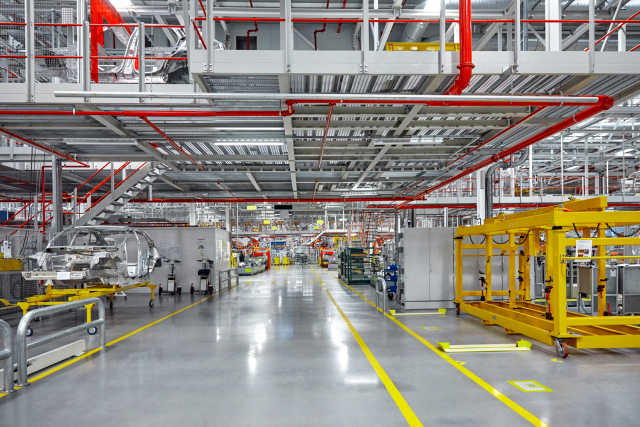As international markets opened up to free trade in the latter half of the 20th century, the term “offshoring” became synonymous in popular culture with the loss of U.S. manufacturing jobs, the hollowing-out of industrial cities, and increased economic inequality.
It’s easy to see how this would have happened. When a firm offshores, it relocates some of its activity from its home country to a foreign country. So it was natural to assume that offshoring was simply replacing domestic workers with lower-cost labor somewhere far away. This assumption was especially attractive given the absence of hard data about the impact of offshoring on firms’ operations and employment.
But that data is now starting to become available. Armed with a unique firm-level survey on the manufacturing output of the Danish economy, Tuck professors Andrew Bernard and Teresa Fort find that, in fact, offshoring doesn’t destroy domestic production. In their new working paper for the National Bureau of Economic Research, Bernard and Fort, along with co-authors Valerie Smeets and Frederic Warzynski of Aarhus University in Denmark, study what happens inside firms when they offshore—how they structure their employment, what goods they make, and what R&D and technology activities they engage in.
We came to realize that the world is more complex than ‘stuff is made abroad and competes with stuff made at home.'
At a broad level, they provide evidence that the effects of imports vary systematically depending on who imports them—specifically, imports controlled by domestic firms are actually very different from imports controlled by foreign firms. “We came to realize that the world is more complex than ‘stuff is made abroad and competes with stuff made at home,’” says Bernard.
In their study, the authors exploit a survey of Danish firms that offshored their main activity between 2001 and 2006. About nine percent of Danish firms fit in this category, and they mostly offshored to Eastern Europe and China. The researchers link the survey data “to detailed import and production data to analyze precisely what firms do when they offshore,” they write.
Contrary to popular belief, and the authors’ own expectations, they found that the domestic production at these firms did not decrease, even while firms increased their imports of the same narrowly-defined products that they also produce domestically. In fact, the firms often produced the same category of goods in both locations, but at different price points, with the imported varieties priced lower than their domestic counterparts. “This evidence suggests that firms have a set of capabilities in developing, producing, and selling particular products that they exploit by manufacturing different quality versions of the same good in multiple locations,” the authors explain. These results also point to another firm-level benefit of trade liberalization: offshoring the production of lower-quality varieties frees up domestic resources for the creation and marketing of higher-quality varieties.
Rather than preventing firms from reallocating from production towards innovation, we should help displaced manufacturing workers benefit from these new opportunities.
A second and equally important finding is that offshoring causes firms to reorganize their domestic operations by increasing R&D and the number of technology workers they employ. As the authors note, manufacturing firms do a lot more than manufacture. The “pre-production” tasks “can include R&D, product design, and engineering as well as the development of production processes,” they write. The evidence from the paper is that firms conduct many of these pre-production activities domestically, while doing the actual manufacturing elsewhere. One example of this is the Danish pump manufacturer Grundfos, which opened two factories in Hungary in 2000 and 2001, while its Danish workers developed and produced new pumps with digital monitoring systems.
“Although offshoring is associated with a decrease in the firm’s total employment via a reduction in production workers,” the authors explain, “it does not ‘hollow out’ the firm and transform it into a pure intermediary of imported products. Using the detailed employer-employee data, we show that offshoring leads to both hiring new technology workers and to shifting workers within the firm to technology-related occupations.”
With the U.S. in the midst of a deep economic recession, a complete understanding about the impact of offshoring is more important than ever. A common refrain has been that the U.S. needs to rebuild its manufacturing sector and reduce its reliance on offshore labor. A broader perspective on this issue is likely beneficial: American firms can offshore and create jobs at home.
“Our results indicate that offshoring allows firms to increase employment in R&D and other innovative activities,” says Fort. “Since these types of activities are most likely to affect future growth, policies that curtail that reallocation may reduce future growth. Rather than preventing firms from reallocating from production towards innovation, we should help displaced manufacturing workers benefit from these new opportunities.”

